Weekly birding round-up: 31 Oct - 6 Nov
While numbers of passage migrants grew ever fewer this past week as the year moved into its penultimate month, there was still some wheat to be found amongst the thinning chaff blowing in the wind on the northern isles. Meanwhile, there was quality to be found elsewhere – chiefly a first for Ireland, but some goodies in Wales and England too. On the face of it, something for everyone, but these birds largely all had one thing in common – you needed to be in the right place at the right time for them.
These days we should be inured to the fact that one can never, really, switch off where seabirds are concerned. It seems like any month of the year could throw a surprise our way, and in some unexpected quarters too, whether it’s a White Tern in a hotel garden in Gwynedd in March, or a Tufted Puffin bobbing on the muddy tidal waters of the Swale in Kent in September.
That said, chances of finding a mega seabird rise significantly if you’re actually seawatching on the coast. As observers in Co.Cork this week might heartily attest, given what passed first Seven Heads at close range and, a little under an hour later, Galley Head in the late morning of 3rd – Ireland’s first Soft-plumaged Petrel.
Oof.
So November’s definitely too early to hang up your scope for the year. Frankly, there’s probably never a time it’s safe to do so. The days may be rapidly drawing in now, but there are worse things one could be doing than looking out to sea.
What a run Orkney’s enjoyed lately. The preceding fortnight delivered Rufous-tailed Robin and Siberian Rubythroat to North Ronaldsay in consecutive weeks, but during the week just gone it was the turn of Orkney Mainland to shine with a bird not from the east, but from the west.
Orkney’s one and only previous Rose-breasted Grosbeak was a one-day first-winter male near Stenquoy on the relatively less-birded isle of Eday on 10th October 2011. Another, readily accessible one would go down well with local birders for sure.
This week another first-winter male was found, and this time on Mainland at Tankerness in the early afternoon of 4th. Annoyingly, it wasn’t to be seen again thereafter. How long had it been there beforehand? We’ll never know, but at least it didn’t slip entirely under the radar. One wonders how many other vagrants to Orkney and Shetland go wholly unseen by birders – coverage tends to be good in the vicinity of birders’ homes, but much patchier further afield, and while on a map either archipelago may look on the small side, in practice there’s a lot of the islands that rarely if ever sees a birder.
One area of Shetland that enjoys extensive observer effort is the south Mainland and, in particular, the area from Sumburgh north to Scousburgh. A good proportion of Shetland’s resident birders live in this zone, and little escapes their notice.
As garden birds go, an Oriental Turtle Dove is a good one – and two is beyond the dreams of avarice, but that’s just what one lucky home was blessed with this week at Hillwell. First seen on 1st, the two meena birds continued to haunt the area until 5th.
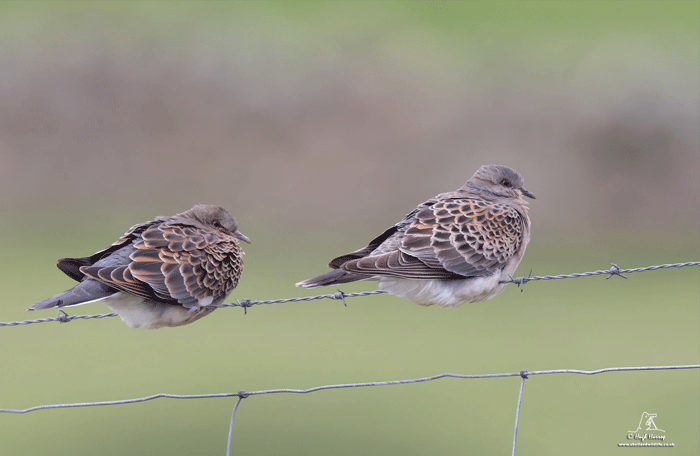
And remarkably, this was not even the first Oriental Turtle Dove of the year for Hillwell – there was, of course, a bird there this spring on 12th May.
Completing the hat-trick for the Scottish isles this week, the irrepressible Bruce Taylor was at it again on Barra (Western Isles) with a superb find on 2nd, a female / first-winter drake Bufflehead that gave him the runaround before finally giving itself up as the first record of its kind on the island.

And not only that – this brief Bufflehead was only the fourth record for the Western Isles as a whole, and the first for a number of years, the last record coming from Lewis on 8th-9th June 2007. Unfortunately this week’s bird was a skittish creature and wasn’t for hanging around, soon heading off west, not to be seen again.
The Scottish isles didn’t enjoy a complete monopoly on the British rarity action this week, with one of Wales’ finest getting a look in on 5th with the discovery of a Killdeer on Skokholm (Pembrokeshire).
This was fireworks from a Welsh birding perspective as there have been only three previous records of this attractive wader in the country, and the most recent of those was way back in 1993/4, a bird found on Anglesey that saw the New Year in and notched up a four-day stay.

This week’s bird remained on Skokholm until dusk on 5th, and was seen again there in the morning of 6th before heading off high east, turning up later that morning on nearby Skomer for a brief pitstop before heading east again.
Perhaps a blessing in disguise, this flightiness, for boats to Skokholm were unlikely due to the weather conditions in the area. If it could only be found on the Welsh mainland, birders will be in business. Alas as 6th drew to a close it was seen and heard again around both, for now inaccessible, islands.
The lexicon of twitching is a curious one, starting with the very term ‘twitching’ itself, which enjoys various explanations, but has proven enduring on the whole. Some turns of phrase enjoy their time in the sun and fade away, and new expressions blossom for a while. We can only hope that ‘old hat’ goes the way of ‘hyperzonky megacrippler’, for both are right up there in the toe-curling, whole body cringe stakes. The latter just feels plain awkward and weird, adjectives we hardly need court given how askance our hobby’s practitioners are viewed by many. But the former’s arguably worse, with its air of jaded cynicism and a faintly smug undertone delivered while belittling a bird that’s now being found more regularly than hitherto.
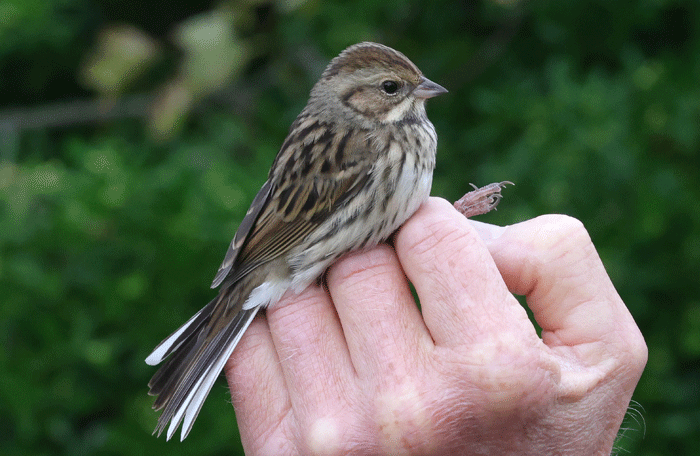
’Old hat’ was getting an outing as the current week drew to a close, with the discovery of a Black-faced Bunting in Dorset, trapped and ringed on Portland in the morning of 6th eliciting that response in some online quarters. Granted, 2025 has seen unprecedented numbers of the species found in Europe, continuing what seems an inexorable increasing trend for them to occur this far west. Britain’s done well for them too in the course of the autumn, with three birds respectively logged on Shetland’s Mainland in September and October, and in East Yorkshire at Spurn in October. And that was before the discovery of another this past week on Fair Isle (Shetland) on 1st-6th, followed by a new bird on the isle on 6th.
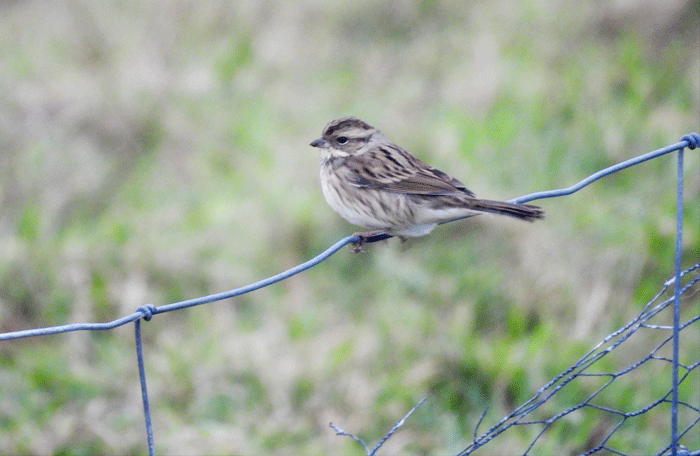
Matters were scarcely helped by still another bird being trapped and ringed as the week drew to a close, this time down in Cornwall in the mighty Nanjizal Valley later on in the morning of 6th. Are we done with them for 2025? One rather doubts it.
It’s perhaps worth drawing a line under this week’s headlines with a look back to Portland, and another bunting of yore – the smart Yellow-breasted Bunting of 8th-10th September 1993. At the time, the species was still readily seen most autumns in Britain. But anyone who saw this confiding bird at the time would have been baffled by someone belittling it by calling it ‘old hat’ – why dilute the pure joy of simply seeing a cool bird? If novelty is all that sparks your fire, that’s a shame.
Co.Cork didn’t have a total monopoly on notable seabirds this week, for a startling sighting came from Norfolk too on 31st, where a Black-browed Albatross was seen offshore with Gannet in the early afternoon before flying off north. Alas, not to be seen again.
Elsewhere, our primary seabird interest came from Great Shearwater, whose numbers were notable – around 850 were logged during the course of the week, with a peak count of 500 seen in Cornwall from The Lizard on 4th.
Cory’s Shearwater meanwhile faded to almost nothing. Birds were noted this week in Cornwall, where two were seen from St Ives on 2nd, and singletons from Pennance Point on 31st, and Porthgwarra on 3rd.
Pennance Point also delivered a Balearic Shearwater on 31st; 15 birds were seen from Selsey Bill (West Sussex) on 1st.
Numbers of Leach’s Petrel picked up in recent days, with around 50 birds logged during the week. Peak count of their kind was 13 birds seen from St Ives (Cornwall) on 2nd.
Around 30 Pomarine Skua this past week represented a significant drop on the preceding week. Long-tailed Skua were a vanishing commodity in these parts – single birds were seen at Galley Head (Co.Cork) on 31st, Lossiemouth (Moray) on 1st, The Lizard (Cornwall) on 3rd, and Bridges of Ross (Co.Clare) on 6th.
Even Little Auk were having a quiet one, with only a smidgen over 20 birds recorded nationwide during the week.

A White-billed Diver was seen from North Ronaldsay (Orkney) on 3rd.
Moving on to the long-legged beasties, still loads of Glossy Ibis this past week. Which was nice.
More unusual in these strangest of days, a juvenile Purple Heron was seen at Lakenheath Fen RSPB (Cambridgeshire) on 3rd; one was reported again at Feltwell (Norfolk) on 5th; a further juvenile was seen on 5th-6th in Somerset at Ham Wall RSPB; and another was reported from Marazion Marsh RSPB (Cornwall) on 6th.
A probable Spotted Crake was seen in flight at Swinister Burn (Shetland) on 5th.
We start the honkers and quackers with, as ever, The Goose Formerly Known As Canada - an interior Todd’s Canada Goose remained at Ballygilgan NR (Co.Sligo) on 2nd, with another seen on Islay (Argyll & Bute) on 2nd also; Islay also retained a hutchinsii Richardson’s Cackling Goose still on 2nd-6th, as did Ballygilgan NR on 2nd also, with another on 3rd-5th at Rockcliffe Marsh (Cumbria); and a Cackling Goose was also seen on Islay on 1st again.
A Snow Goose was still present in Highland & Caithness at Udale Bay on 31st-3rd, and another seen on 6th west of Crimond (Aberdeenshire).
A Red-breasted Goose remained on Islay (Argyll & Bute) on 4th-6th; and another was seen on 3rd in Essex at Wallasea Island RSPB.
A Black Brant was seen on 5th at Moulsford (Oxfordshire).
Onto the quackers, in Dorset the recent Baikal Teal was still at Abbotsbury Swannery on 31st-2nd.
Green-winged Teal broke into double figures this week. Birds were seen in Highland & Caithness at Loch Fleet still on 1st-4th, and Tain Links on 4th-6th; on Barra (Western Isles) still on 1st; on Islay (Argyll & Bute) on 2nd still; at Leighton Moss RSPB (Lancashire & North Merseyside) on 1st-5th; at Welney WWT (Norfolk) still on 2nd; in Co.Dublin on North Bull Island 4th, and Broadmeadows Estuary on 2nd; on 5th at Colt Crag Reservoir (Northumberland); and on 5th at Howdon Wetland NR (Northumberland).
American Wigeon remained settled at Bishop Middleham (Co.Durham) on 2nd-6th, Newshot Island (Clyde) on 2nd-4th, and on Loch of Spiggie (Shetland) on 31st-4th.
Just shy of 20 Ring-necked Duck were again logged across Britain and Ireland this week, with a couple of sites enjoying multiple birds – five present at Lough Yganavan (Co.Kerry) on 1st; and three at Lough Gara (Co.Sligo) on 3rd.
Lesser Scaup continued their recent upward trend, with almost double figures noted this week. Settled recent birds remained at Tacumshin (Co.Wexford) on 1st-2nd still, and Ditchford GPs (Northamptonshire) on 31st-6th still. Further birds this week were present on Tiree (Argyll & Bute) on 31st; on 2nd at Portmore Lough RSPB (Co.Antrim), Chew Valley Lake (Somerset), and Auchenreoch Loch (Dumfries & Galloway) – the Somerset bird still present at Chew on 5th; and a drake was at Helston (Cornwall) on 4th, joined by a female on 5th-6th. A further probable was seen at Auchenreoch Loch on 1st, and a possible at Bateman’s Lake (Co.Cork) on 31st.
The female Ferruginous Duck remained at Brampton GPs (Cambridgeshire) on 31st; and a possible was on Napton Reservoir (Warwickshire) on 6th.
A drake White-winged Scoter was found in Co.Kerry at Rossbeigh on 4th.
Surf Scoter meanwhile were seen this week from Rossbeigh on 4th; Owenahincha (Co.Cork) on 1st-6th, with two present on the 6th; and in Burghead Bay (Moray) on 3rd.
Finally, the settled juvenile drake Harlequin Duck remained in Co.Donegal off Port Arthur Beach still on 31st-6th.
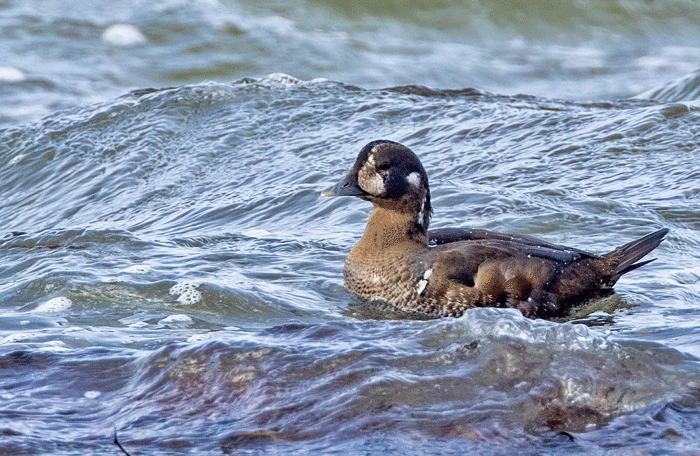
Interesting waders, Pembrokeshire notwithstanding, continued to dry up this past week. Foremost among the non-headliners were White-rumped Sandpiper, with four birds remaining present at Myroe Levels (Co.Derry) still on 31st; Angus sightings at Montrose Basin and Riverside NP on 1st; a bird at Invergowrie (Perth & Kinross) on 1st-4th; one present at Blithfield Reservoir (Staffordshire) on 2nd still; and on 5th, one at Lough Beg (Co.Derry), and another in Co.Cork at Ballycotton.
Our recent Temminck’s Stint remained present at Slimbridge WWT (Glouucestershire) on 31st-5th.
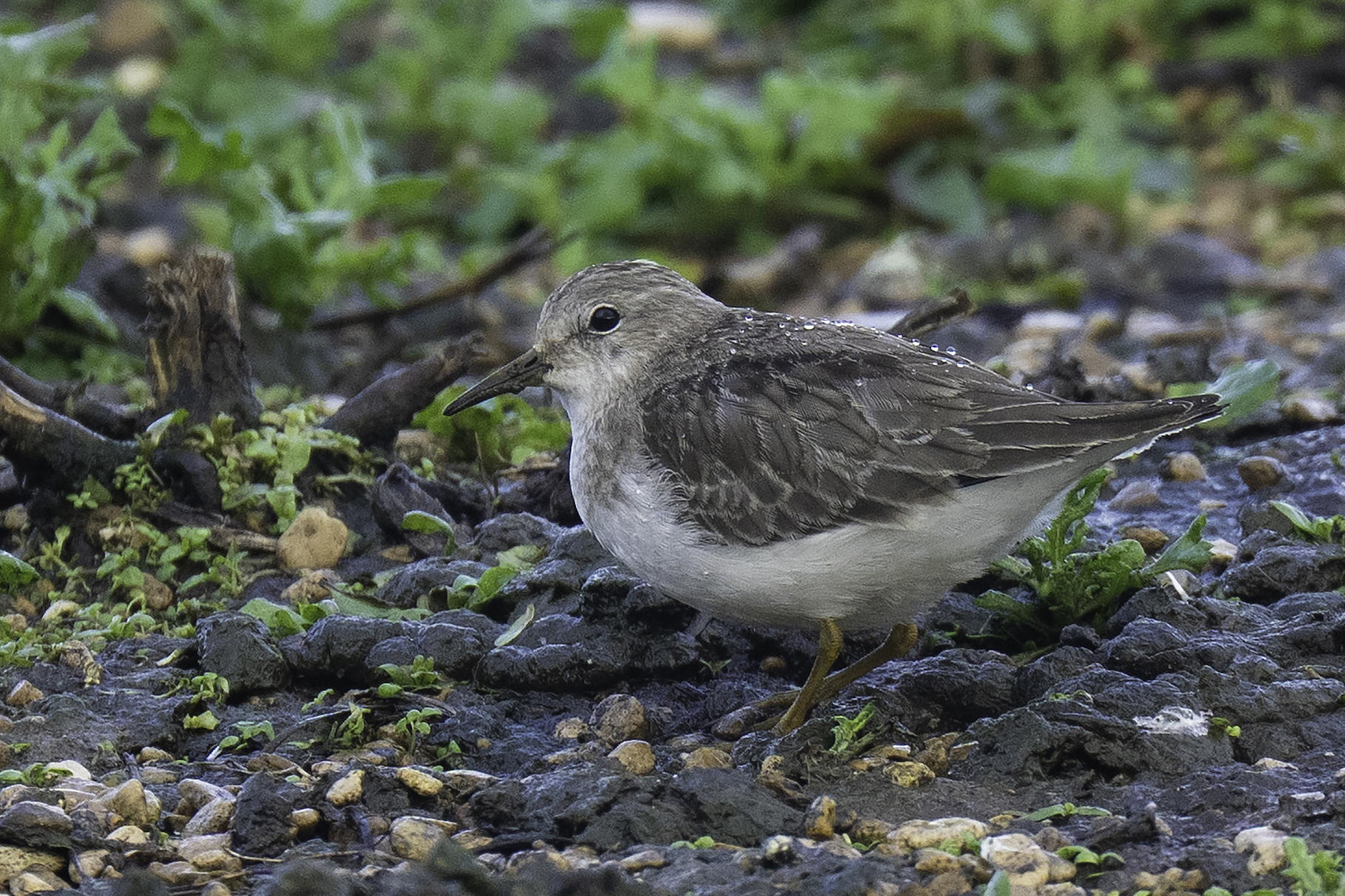
A Pectoral Sandpiper was seen on 1st at Dornoch Point (Highland & Caithness).
Two of our recent Lesser Yellowlegs hung around this past week – one still on Rathlin Island (Co.Antrim) on 1st-4th, and the other still in Cornwall at Truro on 31st-5th. A new bird was found on Anglesey on Inland Sea on 4th-6th.
Long-billed Dowitcher remained at Montrose Basin (Angus) still on 31st-2nd, and at Tacumshin (Co.Wexford) on 1st.
Nine or ten American Golden Plover were logged during the week, with two at Myroe Levels (Co.Derry) on 1st notable; additional singletons were seen on Fetlar (Shetland) on 1st-3rd again; Fife Ness (Fife) briefly on 1st; on South Uist (Western Isles) on 1st; at Eyebrook Reservoir (Leicestershire) still on 31st-6th; at Rye Harbour NR (East Sussex) on 4th-5th; at Titchwell RSPB (Norfolk) on 5th-6th; at Balcomie (Fife) on 6th; and a probable at North Cave Wetlands YWT (East Yorkshire) on 3rd.
A Dotterel was present at Nosterfield Quarry (North Yorkshire) on 6th.
Finally, 16 Grey Phalarope were seen during the week, half of which passed St Ives (Cornwall) on 2nd.
Just two Bonaparte’s Gull were seen lately, one still present on Rathlin Island (Co.Antrim) on 1st-4th, and another on 5th on Papa Westray (Orkney).
An adult Ring-billed Gull remained in Co.Kerry at Blennerville still on 1st.
Numbers of Glaucous Gull took a tumble, with a mere handful seen during the week – on 31st from North Ronaldsay (Orkney) and Bempton Cliffs RSPB (East Yorkshire); on 2nd at Ballynamona (Co.Cork), Arisaig (Highland & Caithness), and Whitburn CP (Co.Durham), the latter site also accounting for a record on 4th-5th; and on 5th at Black Rock Strand (Co.Kerry).
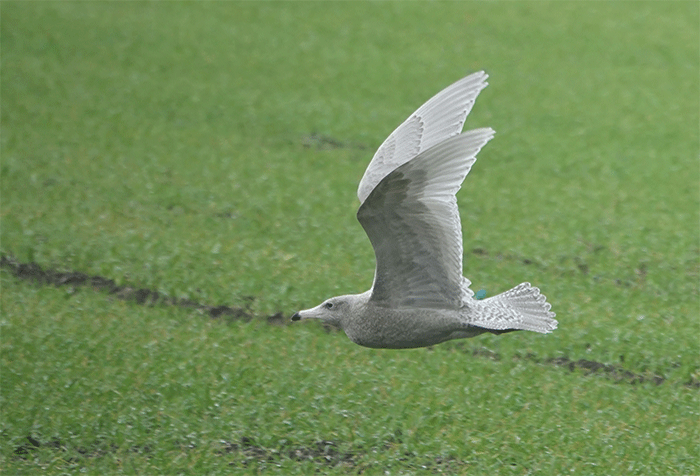
Similar low numbers of Iceland Gull were also noted lately – birds seen on 1st-2nd on North Ronaldsay (Orkney), on 2nd on Papa Westray (Orkney) and at Crows-an-wra (Cornwall), and on 3rd at Drift Reservoir (Cornwall); and a further Cornish sighting reported from St Ives on 1st.
Finally, a juvenile White-winged Black Tern was seen on 31st offshore from Llanddulas (Conwy).
Harriers kept the raptors interesting for another week. In Co.Wexford both recent adult and juvenile Northern Harrier were again present at Tacumshin on 1st-2nd, with the juvenile again at Cahore Marsh on 1st and 6th.
The female Pallid Harrier was still haunting Wales, seen in Glamorgan at Llanrhidian Marsh again on 2nd and 6th. Another possible was seen at Holme Dunes NWT (Norfolk) on 6th.
Further intrigue came from Dorset on 5th, with a juvenile Saker seen over Wyke Regis and Portland.
Shrikes of many hues continued to make the running for the passerines this week, with plenty of lingering variety on offer the length and breadth of Britain and Ireland as a whole.
Starting in Suffolk, the Brown Shrike remained at Upper Hollesley Common on 31st-2nd.

The adult female Red-backed Shrike remained at Rimac (Lincolnshire) on 31st-2nd.

The Isabelline Shrike sp, thought to be a probable Daurian Shrike, remained in West Sussex at Woods Mill SWT on 31st-2nd, while the adult male Daurian Shrike remained in Co.Wexford at Ring Marsh on 31st-6th.

Hampshire gave us Great Grey Shrike at Pig Bush still on 31st-1st and Beaulieu Road Station on 2nd-6th; and another was found on 2nd in Suffolk at Knettishall Airfield.

Wrapping up the shrikes, both recent pallidirostris Steppe Grey Shrike were still to be seen, one in Shetland at Scousburgh on 31st-1st, and the other still in Cornwall at Gunwalloe on 31st-5th.

A Hoopoe remained on St Mary’s (Scilly) on 31st-6th; additional birds this week were on Vatersay (Western Isles) on 3rd, and reported again at Titchwell RSPB (Norfolk) on 4th.
A Wryneck was seen on St Mary’s (Scilly) on 1st-2nd.
Early November can be a fruitful time for wayward Pallid Swift - birds were seen this week on 1st at Selsey Bill (West Sussex); and in Kent on 5th-6th at Foreness Point; and on 6th at Dundalk (Co.Louth), and Portland (Dorset).
Around 35 Waxwing were logged this week, with 11 in Forres (Moray) on 2nd the largest aggregation reported.
Numbers of Yellow-browed Warbler continued to slide, with a little under 80 logged during the week.
Pallas’s Warbler on the other hand enjoyed a renaissance this week – it was practically a firework display of sprites down the east coast and onto the south coast too, with nearly 30 coastal county birds in all logged, including two at Beachy Head (East Sussex) alone on 6th.
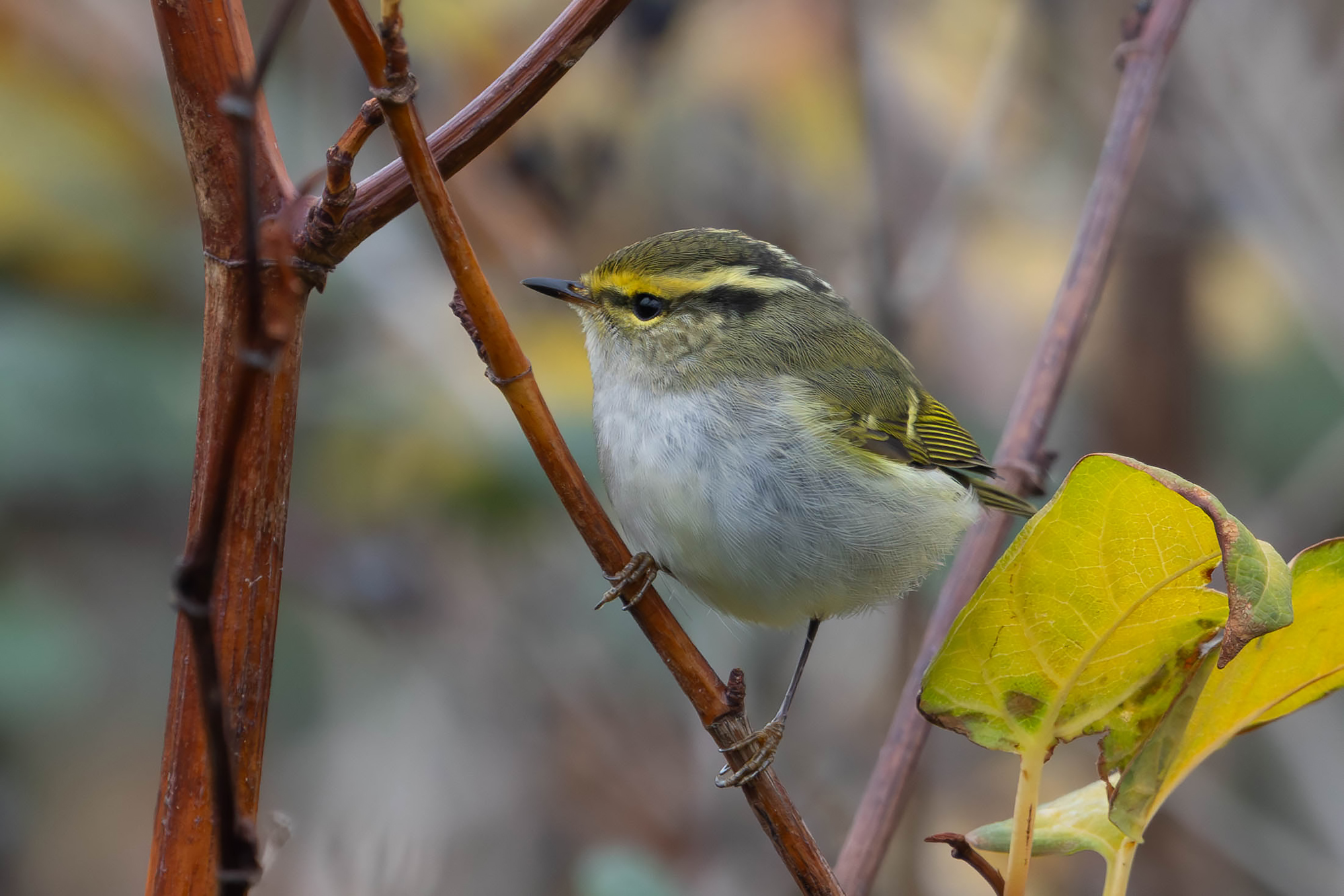
A handful of Dusky Warbler also checked in – one on Shetland Mainland at Sandwick on 5th-6th; and on 6th at Stiffkey (Norfolk), Filey Brigg (North Yorkshire), Tresco (Scilly), Minsmere RSPB (Suffolk), and a probable at East Fleet (Dorset).
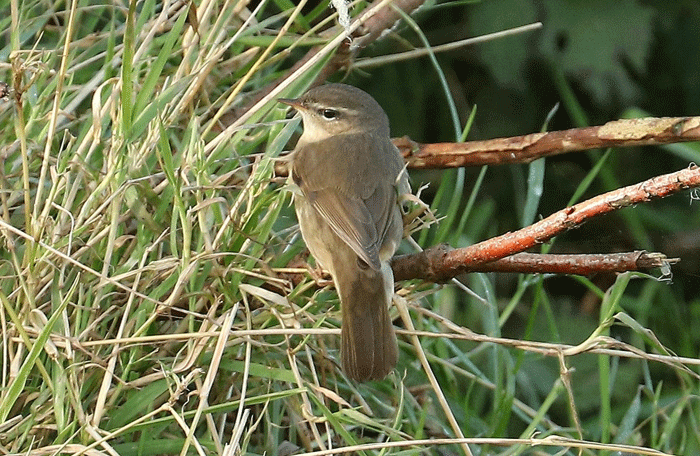
A Radde’s Warbler was seen on Orkney on Westray on 5th-6th.
Shetland gave us a couple of late-running Barred Warbler - one on Fair Isle on 31st, and another on Mainland at Dalsetter on 1st – while another was found on 6th at Kilnsea (East Yorkshire).
Three Zitting Cisticola remained at Walberswick (Suffolk) on 2nd-6th.
On St Mary’s (Scilly), the Bluethroat was still present on 31st-3rd.
An Eyebrowed Thrush made a fleeting appearance on Orkney on Mainland at Finstown on 4th.
Shetland had a Red-breasted Flycatcher on Mainland at Kergord on 4th; another was present on Tresco (Scilly) on 6th.
An Olive-backed Pipit was providing a distraction from Oriental Turtle Doves at Hillwell on Shetland Mainland on 2nd-3rd. Another was present on St Mary’s (Scilly) on 6th.
A few Richard’s Pipit were noted this week – one reported at North Point Pools (Norfolk) on 1st; one on Bardsey (Gwynedd) on 2nd; one in Cornwall at St Buryan on 2nd; a settled bird at Alkborough Flats NR (Lincolnshire) on 2nd-4th; and a final bird on Tresco (Scilly) on 6th.
Widely separate Arctic Redpoll were seen this week in Shetland in Sound still on 31st, and on St Mary’s (Scilly) on 2nd.
A Little Bunting was found in Northumberland at Alnmouth on 2nd, and at least one more near Polgigga (Cornwall) on 5th.
And finally, a presumably boat-hopping Boat-tailed Grackle was found in Hampshire by the shipping lanes on quayside at Calshot on 2nd-5th. A reasonably sedentary species, one assumes it’s a transatlantic hitchhiker. And where lists are concerned, for some of our tribe that’s absolutely fine, and for some it’s really not. To each their own. At least nobody’s going to call it ‘old hat’.
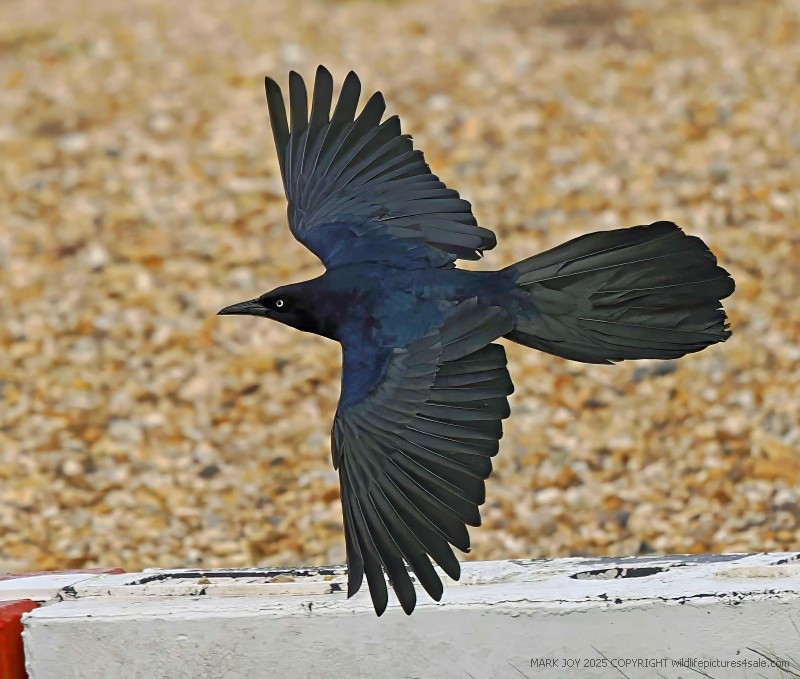
We kick off the overseas news in Scandinavia where, in Finland, a Black-throated Accentor was seen at Hanko on 1st; and, in Norway, a Calandra Lark on 2nd at Mandal. The former species at least would have the power to significantly disrupt the autumn of many were it to make it to the British east coast.
Up in Iceland, the Brown-headed Cowbird continued to show well in Reykjavik on 2nd, and a Grey-cheeked Thrush was found on 3rd at Svindalur.
To the Netherlands, where the returned drake Spectacled Eider remained off Texel on 31st-6th, the Western Swamphen was still at Zevenhuizen on 31st-6th, and the Pygmy Cormorant at Natuurpark Lelystad on 5th-6th still. And the Netherlands finally got in on the Black-faced Bunting scene with a bird trapped and ringed at Westenschouwen on 31st, another trapped and ringed on 5th at Amsterdamse Waterleidingduinen, and a flyover also on 5th at Westenschouwen – the same same one as that trapped on 31st? One wouldn’t put money on it, given the volume seen lately in Europe.
A Steppe Eagle was seen in France on 6th at Enez Du.
In Spain, the settled Cape Gull remained in Laredo on 2nd, while in Portugal the Red-footed Booby was still present at Porto da Baleeira still on 31st-3rd.
In Israel the Verreaux’s Eagle remained at Etek Canyon on 31st.
Out to Cape Verde, the Western Willet was again seen on Boa Vista on 6th.
Finally, news from the Azores – Sao Miguel retained its Snowy Egret on 31st.
Well, the first week of November certainly didn’t disappoint, so what of the second week that lies ahead of us?
It feels a little like shooting fish in a barrel at this juncture to suggest another Black-faced Bunting, but surely there’s a sporting chance of just that happening. Maybe we can invoke one at Dungeness?
But other buntings are traditionally available at this point – it’s a good time for a Rustic or a cheeky Pine Bunting.
But if there’s one thing early November really does well, it’s rare wheatears – the coming week is traditionally a cracker for Pied Wheatear and, in particular, Desert Wheatear - over 30 records of the latter owe themselves to the week ahead – definitely a species that should be on our collective radar now.
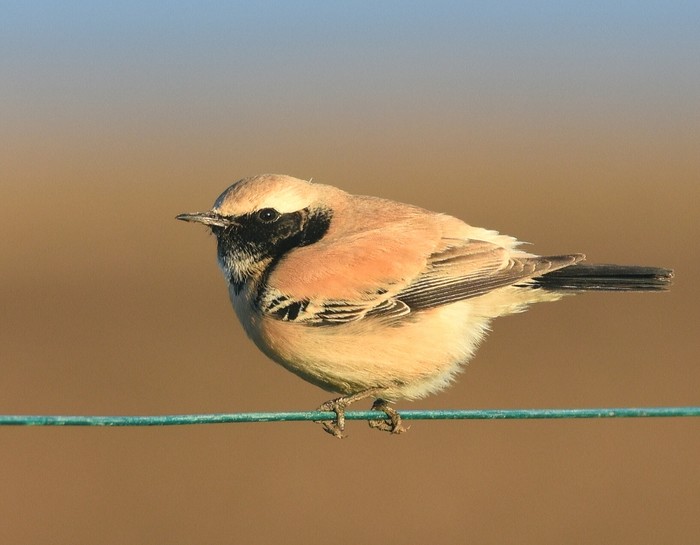
Jon Dunn
7 November 2025
Many thanks to all this week's contributors for your photos and videos
Get Breaking Birdnews First
Get all the latest breaking bird news as it happens, download BirdAlertPRO for a 30-day free trial. No payment details required, and get exclusive first-time subscriber offers.
Share

















